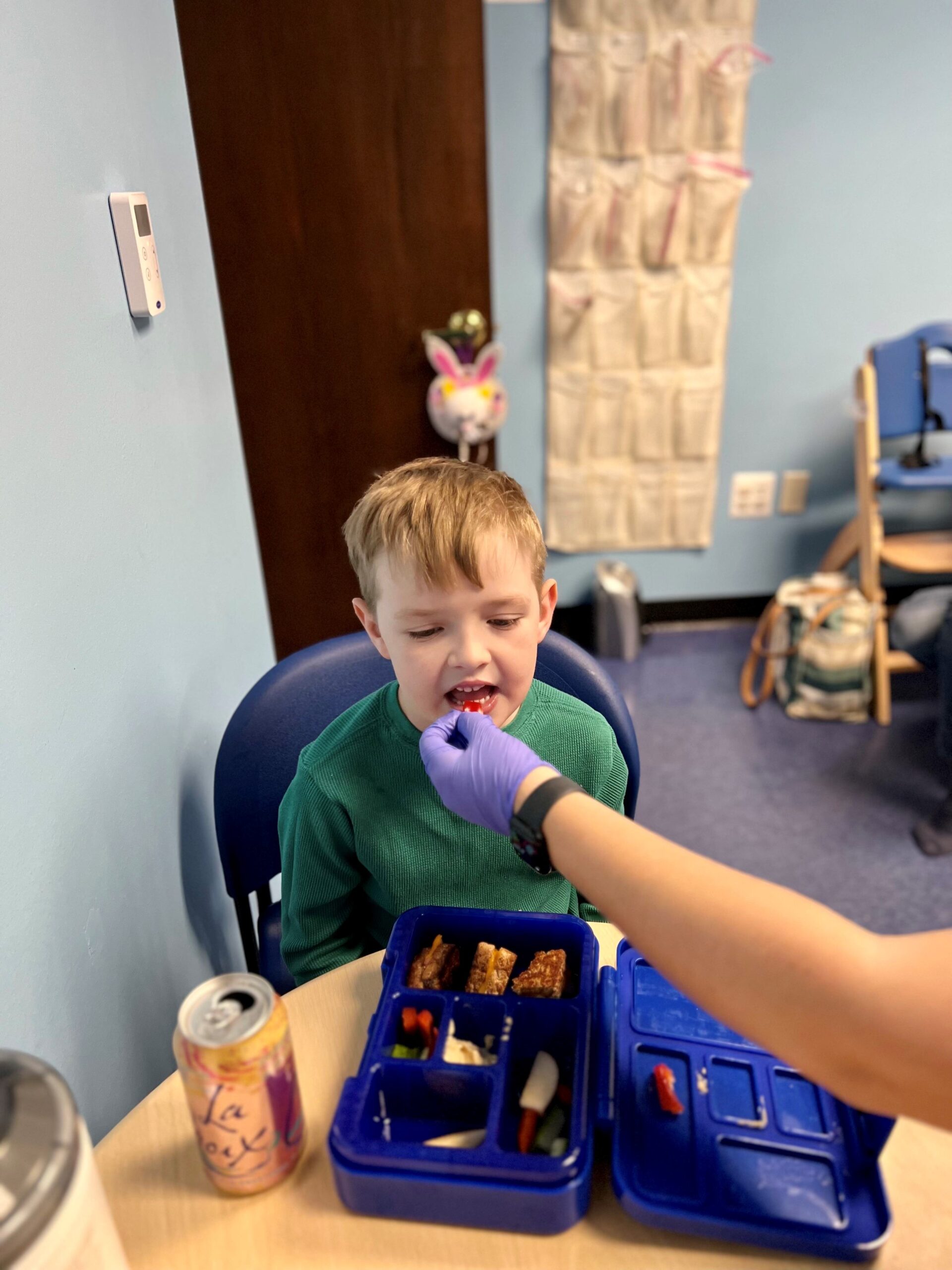
Understanding Picky Eating
Picky eating is a common phase in childhood, but it can still be a source of frustration for families. Children who are picky eaters may refuse to try new foods, have strong food preferences, or experience anxiety around meals. These behaviors are often a natural part of development, but for some children, picky eating can be linked to sensory sensitivities, oral-motor difficulties, or underlying health issues that make mealtime especially challenging.
Common Characteristics of Picky Eaters:
- Refusal to try new foods (food neophobia)
- Limiting their diet to a small number of preferred foods
- Strong preferences for certain textures or flavors
- Gagging or vomiting when presented with non-preferred foods
- Anxiety or stress related to mealtime
For children with more severe picky eating behaviors, such as extreme aversions or fear of certain foods, professional intervention may be necessary to ensure they receive the necessary nutrients for growth and development.


The Importance of a Positive Mealtime Environment
One of the key strategies for managing picky eating is creating a positive mealtime environment. Caregivers play a crucial role in shaping a child’s attitude toward food, and a calm, no-pressure atmosphere can encourage children to explore new foods and develop healthy eating habits.
Tips for Creating a Positive Mealtime Experience:
Set Consistent Meal and Snack Times:
Encourage Family Meals:
Keep Mealtime Relaxed:
Offer a Variety of Foods:
Get Children Involved:
Respect Your Child’s Appetite:
Make Food Fun:

How Occupational Therapy Can Help with Picky Eating
If picky eating becomes a significant challenge, consulting with an occupational therapist who specializes in feeding therapy can make a big difference. Our occupational therapists at MPT take a holistic approach to feeding and work with children to overcome sensory, oral-motor, and behavioral challenges that may contribute to picky eating.
Feeding Therapy Goals:
Desensitizing Sensory Aversion:
Improving Oral-Motor Skills:
Reducing Mealtime Anxiety:
Introducing New Foods Gradually:

The Role of Caregivers in Feeding Therapy
Consistency:
Patience and Positivity:
Create a No-Pressure Environment:
Incorporate Play:
Communication with the OT:

Fun Tips and Ideas for Picky Eaters
Food Art
Dipping Fun
Themed Meals
Reward Charts
Cooking Together
Involve your child in meal preparation. Kids who help make meals are often more eager to eat them.
Food Exposure Activities

Conclusion
Creating a positive mealtime experience for picky eaters is all about patience, creativity, and support. By fostering a calm, no-pressure environment and incorporating fun and playful elements, caregivers can help their children develop a healthy relationship with food. When mealtimes become particularly challenging, consulting with an occupational therapist for feeding therapy can provide invaluable guidance and strategies to help make mealtimes less stressful and more enjoyable for everyone involved.
If you’re struggling with picky eating in your household, know that you’re not alone. Our occupational therapists at MPT can offer the specialized support and intervention needed to make a lasting positive impact on your child’s eating habits. By working together, we can help your child build a foundation for a lifetime of healthy and happy eating experiences.
Michigan Pediatric Therapy
📍 27655 Middlebelt Rd., Suite 130, Farmington Hills, MI 48334
📞 (248) 939-4030
🌐 mipediatrictherapy.com



